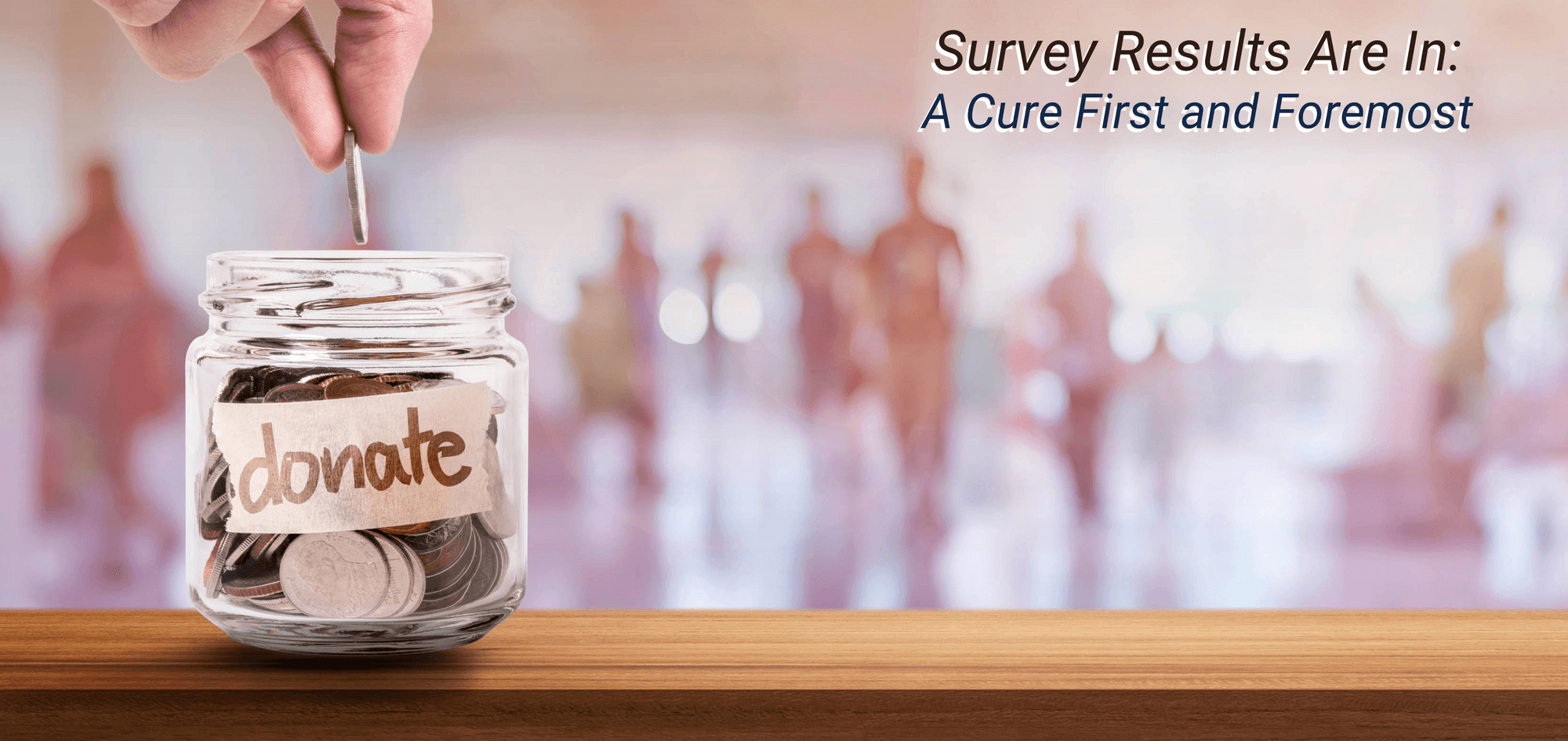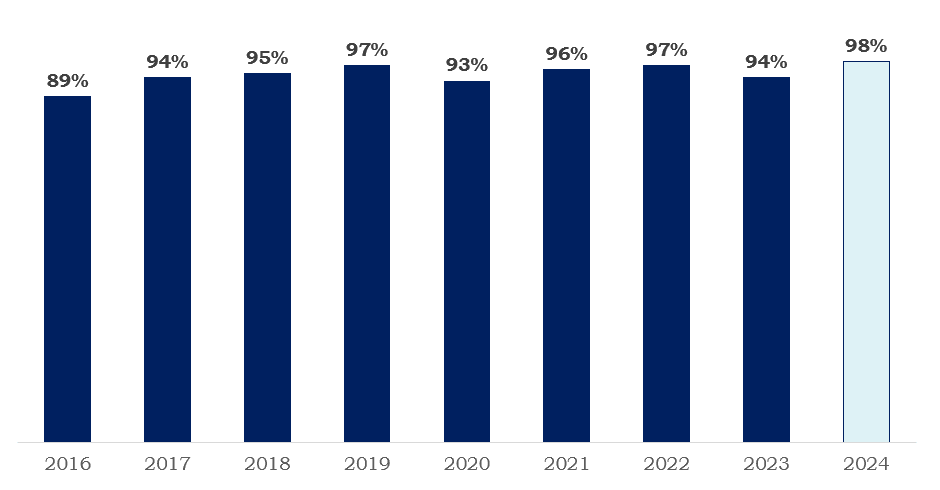
At a Glance
- 98% of donors say a cure is the foremost reason they participated in a fundraising event.
- 96% believe most money raised at fundraising events should be used for T1D cure research.
- Breakthrough T1D increased research funding to 44% of annual income (2023), drawing donor support.
- 89% of donors are less likely to or will stop fundraising for the ADA as the historical trend worsens.
- 81% of donors would be more likely to raise money for a nonprofit if its cure research funding grew to 60% of its annual income.
September 19, 2024
Throughout the year and without fail, the T1D community comes together to participate in fundraising events and donate money to diabetes nonprofits. These events are held as rides, walks, and galas; pickleball tournaments, concerts, and a wide range of other unique activities. The creativity, determination, and generosity of the community are unrivaled, contributing millions of dollars to these institutions every year to better the lives of those impacted by the disease. Without the support from the T1D community, T1D research and treatment options would not be what they are today.
When money is raised, several questions should be posed: ‘Where do we want our hard-earned contributions to go?’ ‘What motivates us to participate in events in the first place?’
To answer these questions, JDCA fielded a survey to active donors and fundraisers in the T1D community. The findings are detailed below, pinpointing the priorities of the T1D community.
Key Findings
1. ‘Finding a Cure’ Is the Greatest Driver for Participation
98% of survey-takers reported that finding a T1D cure is the most important reason they participated in a T1D fundraising event. Since this survey’s inception in 2016, cure research has held steadfast as the most influential motivator to contribute to events. For this reason, major and minor nonprofits alike utilize cure messaging in fundraising advertisements, suggesting proceeds will directly fund cure research.
96% believe most money raised at fundraising events should be used for T1D cure research.
Chart 1: Finding a cure for type 1 diabetes is the most important reason I participated in a T1D fundraising event (% agree)

2. Most Donors Believe Their Gifts Are Used for Cure Research
At the start of this survey, 74% of survey takers believed that at least half of all money raised at fundraising events went toward cure research.
Chart 2: How much of the money raised at diabetes fundraising events do you believe is used to fund T1D cure research?

3. Nonprofits Risk Losing T1D Donor Support Unless Cure Research Is Prioritized
The next questions pertained to the two largest diabetes nonprofits, Breakthrough T1D (formerly JDRF) and the American Diabetes Association (ADA), in relation to their actual research grant allocation.
Breakthrough T1D
37% of Breakthrough T1D donors are less likely to participate in events once they learn that only 44% of annual income was spent on T1D research grants (FY23). However, BT1D has increased grant spending since COVID, but it is still a long way from its peak of research grant spending, which was upwards of 80% of its total income in 2001.
American Diabetes Association
60% of survey takers reported they would not participate in ADA events after learning the organization gives less than 5% of its annual income to T1D research grants.
29% reported being less likely to participate.
ADA’s reputation has been in steady decline with the T1D donor community as the organization continues to cement its commitment to T2D and allocates little funding to T1D research.
This is reflected in a decrease in T1D participation in ADA fundraising events. In a 2014 survey, 76% of respondents said they participated in an ADA fundraising walk event. By comparison, in 2024, only 19% of respondents said they participated in an ADA fundraising event of any type.
4. Donors Want Their Voices Heard
81% of participants would be more likely to donate to or raise money for a nonprofit if it committed its cure research budget to more than 60% of its annual income. The statistics in this report indicate donors show greater support for nonprofits that reciprocate by committing to the T1D community. If nonprofits aligned funding with donor preferences, they would see a surge in donations and support.
74% of donors believe there should be a mechanism in place that collects and follows donor wishes when making research funding decisions. If implemented, donors would trust that their donations were funding the projects and initiatives that the community values most: Practical Cure research.
